Turner Syndrome
Table of Contents
What is a Turner Syndrome?
Turner syndrome is a congenital ovarian hypoplasia syndrome and a genetic condition that occurs only in women when one of the sex chromosomes is missed or changed partially or completely causing medical and developmental problems like short height, failure of the ovaries to develop, and heart defects. It was reported for the first time by one scientist in 1938.
Turner syndrome may be diagnosed prior to birth, or at the time of infancy. However, the diagnosis may be delayed in girls with mild signs and symptoms until early adulthood. It affects 1/ 2000 baby girls, and those with mild symptoms can be diagnosed late in adulthood or remain undiagnosed so the true prevalence of Turner syndrome is still unknown.
Mechanism of Injury
Incomplete or complete missing of the X chromosome
- When there is an error in the sperm of the father or mother’s egg and every cell of the baby will have one X chromosome this condition is known as Monosomy, in which there is an absolute absence of one X chromosome.
- It is found in about fifty percent of females with Turner syndrome.
- In Mosaicism if when the error happens at the time of time fetal development in cell divisions we will find some cells have only one chromosome and others will have two copies.
- X chromosome changes- In which the cell will have one complete and one altered copy, all cells will have one complete and one altered copy of the X chromosome when the error occurs in the sperm or egg or happens in cell divisions initially during fetal development.
- Y chromosome material- A few cells will have one copy of X chromosomes and one copy of the X chromosome, and some Y chromosome material in other cells.
- And this presentation is regarding a risk factor to develop gonadoblastoma.
- Anomalies that conduct to the non-functioning X chromosome.
Isochromosome
- There are two copies of a short or long arm associated head to head.
Ring chromosome
- where there is a missing part of the end of the long or short arm.
XP or Xq deletion
- Deletion of a part of the short arm of the X chromosome.
Symptoms of Turner Syndrome
- There is diversity in the severity of signs and symptoms among females.
- In some females with turner syndrome, the symptoms can not be clear, while in others, several physical features start early.
- Signs and symptoms can be developing gently over time, or significant, like heart defects.
Signs and symptoms at birth or at the time of infancy can include:
- Congenital lymphedema of the hands and feet.
- Webbed neck.
- Nail dysplasia.
- Narrow and high-arched palate.
- Short fourth metacarpals or metatarsals.
- The high, narrow roof of the mouth (palate).
- Widely spaced nipples and Broad chest.
- Growth is slower than the normal level, and they will have a normal growth rate until they reach 3 years old.
- Cardiac defects.
- Low hairline at the back of the head.
- Increased risk of cardiovascular malformations.
Signs and symptoms in childhood, teens, and adult life:
- Cubitus valgus.
- Madelung deformity of the forearm and wrist.
- Girls will develop shorter.
- Intelligence is within the normal level but may have some neurocognitive deficits.
- Non-functioning ovaries.
- Delayed puberty.
- Amenorrhea, primary or secondary due to premature ovarian failure.
- Failure to begin sexual changes expected during puberty, sexual development, and height are the main affected things.
- Risk to develop high blood pressure.
- Renal anomalies, hearing loss because of recurrent otitis media that cause conductive hearing loss, or sensorineural hearing loss that outcome from defects in the outer hair cells on the cochlea usually happen with Turner syndrome.
- They also have a high risk to develop autoimmune disorders like hypothyroidism in addition they are at risk to develop cardiovascular disease.
- Untreated females with Turner syndrome will grow 20cm shorter than their partners without turner syndrome.
Diagnostic Procedures
Prenatal ultrasound
- It will describe turner syndrome if it showed the following:
- A large amount of fluid collection on the back of the neck or other abnormal fluid collections (edema).
- Heart abnormalities.
- Abnormal kidneys.
Prenatal cell-free DNA screening
- karyotype testing to confirm the diagnosis after birth, if it is negative second karyotype is done with different tissues.
- Follicle-stimulating hormone (FSH)- It will be elevated for those who presented with amenorrhea and delayed puberty.
- Serum TSH at the age of four and above age.
- Amniocentesis( a sample from the amniotic fluid around the fetus).
- A greater amount of girls will be diagnosed only after the age of 5.
Management / Interventions in Turner Syndrome
The management for turner syndrome will need regular interval follow-ups with a multidiscriminative medical team ( Endocrinology Cardiology, Gynecology, Audiology, Ophthalmology, Orthopedic Surgery, Nephrology, occupational therapist, Mental health professional, Special education instructors) and the treatment will be offered on the basis to the presented symptoms. They will require to check regularly their kidney, heart, blood pressure, thyroid, and reproductive system.
Growth hormone therapy
- This is for short-stature females and continues till there is no more bone growth, it reduces the height difference to about 5cm instead of 20 cm.
- It is important to daily monitor their spine should be done, they have a possibility to develop scoliosis during this treatment procedure.
Supplemental vitamin D and calcium will be needed for bone health and osteoporosis.
Estrogen therapy
- It begins around 11-12 years old it is important for puberty and for bone mineral density, females with turner syndrome will require fertility treatment when they want to get pregnant and the majority of women with Turner syndrome, have high-risk pregnancies.
Physical Therapy Management
Girls with turner syndrome can have physical problems and challenges throughout their entire life in addition to, sensorimotor and perceptual, coordination problems that will require training and rehabilitation to help them cope with their environment. Girls with turner syndrome are at high risk for osteoporosis and gradual loading exercises through medical management are necessary.
Physical therapy will be necessary to help them to develop the late milestones, improve balance, Balance training, and coordination exercises for gross and fine motor skills they require to socialize in society. Occupational therapy to develop functional skills; such as handwriting, toileting, dressing, tying shoelaces, and other needed fine motor skills.
Co-ordination exercise
5 exercises to improve coordination
Jumping rope
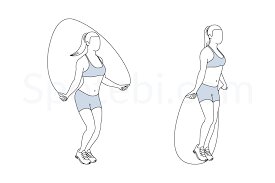
- This is an easy one to do at home, even if the patient does not have a rope.
- Just coordinating the motion of the hands with hopping makes for a good coordination exercise.
How it helps: The patient is combining fine motor skills (the motion of the hands turning the rope) with gross motor skills (the jumping).
Bird dog
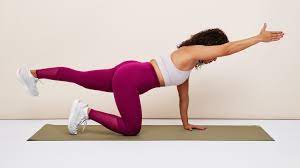
- Start on all fours with the wrists beneath the shoulders and knees under the hips.
- Lift the right arm and left leg off the floor at the same time, extending both to straight and reaching the fingertips as far from the toes as possible.
- Lower both the limb back down and switch sides.
- That is one rep.
How it helps: This alternating motion is a lot like the coordination required for a standing alternating arm and leg extension, The patient is building core stability and capacity for distal movement.” That means bigger movements that need a patient to move the extremity away from the center of the body.
Standing march
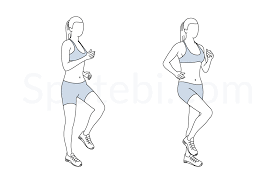
- Start standing with feet under your hips.
- Lift the right knee up so the thigh is parallel with the floor and hold for a breath.
- Then, lower it back down and change the sides.
- That is one rep.
How it helps: Balance is correlated with coordination. They are two separate things, but there is an overlap between the two. Here, a person are coordinating the motion using hip flexion and core stability, on alternating legs.”
Overhead squat
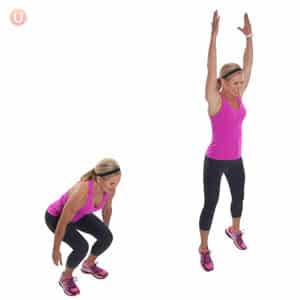
- Stand with the feet shoulder-width apart, and extend the arms up overhead.
- While keeping the torso upright, sit back into the glutes and bend both knees deeply (pressing them away from each other), lowering the seat toward the floor.
- Be sure that the butt does not go lower than the knees, which should not go forward to the toes.
How it helps: Much like the standing march, the person coordinates whole-body movement using hip flexion (bending) and core stability.
Walking lunge
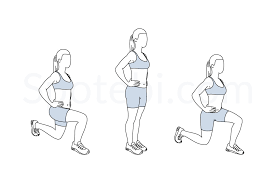
- Start standing with feet under your hips.
- Take a big step forward with the right leg, then bend deeply through both knees, coming into the lunge.
- Press down through the front heel and push off the back foot to stand up and step the left leg forward to meet the right.
- Now repeat with the left leg.
- That is one rep.
- Carry on with alternating, and turn around if the person runs out of the room.
- As in the overhead squat, be sure that the knees track in line with the second and third toes and do not collapse inward.
How it helps: “This needs balance, stability, and coordination of the trunk,
Osteoporosis management
Foot stomps
The goal of exercise to decrease osteoporosis is to challenge the key areas of the body that osteoporosis most commonly affects, like the hips. One of the best ways to challenge the hip bones is by doing foot stomps.
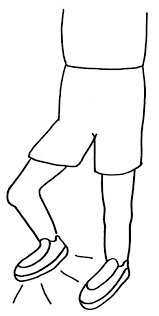
- While standing, stomp the foot, imagining you are crushing an imaginary can underneath it.
- Repeat 3-4 times on one foot, then repeat the exercise on the other foot.
- Hold on to a railing or sturdy piece of furniture if you have difficulty maintaining balance.
Bicep curls
The person can perform bicep curls with either dumbbell weighing between 1 to 5 pounds or a resistance band. They may be performed seated or standing, depending on what the person is most comfortable with.
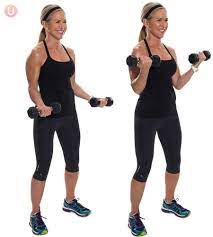
- Take a dumbbell in each hand.
- Or step on a theraband while holding an end in each hand.
- Pull the bands or weights in toward the chest, watching the bicep muscles on the fronts of the upper arms contract.
- Lower the arms to return to the initial position.
- Repeat eight to twelve times.
- Take a few seconds of rest and repeat for a second set, if possible.
Shoulder lifts
The person will also need weights or a resistance band to perform shoulder lifts. The person may perform this exercise from either a standing or seated position.
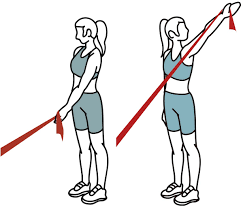
- Take a dumbbell in each hand.
- Or step on a theraband band while holding an end in each hand.
- Start with the arms down and hands at the sides.
- Gently raise the arms out straight in front of you, but do not lock the elbow.
- Lift to a suitable height, but not higher than shoulder level.
- Perform 10 times.
- Take a few seconds of rest and repeat for a second set, if possible.
Hamstring curls
Hamstring curls strengthen the muscles in the backs of the upper legs. The person performs this exercise from a standing position. If necessary, place your hands on a piece of heavy furniture or other sturdy items to improve the balance.
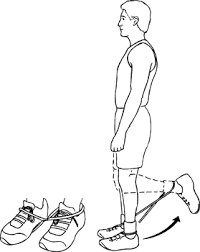
- Stand with the feet shoulder-width apart.
- Slightly move back your left foot until only the toes are touching the floor.
- Contract the muscles in the back of the left leg to lift the left heel toward the buttocks.
- Gently control the left foot as you lower it back to its beginning position.
- Do it a further 10 to 12 times.
- Take some rest, and repeat the exercise on the right leg.
Hip leg lifts
This exercise strengthens the muscles nearby the hips as well as improves balance. Place the hands on a piece of heavy furniture or other sturdy items to improve the balance as needed.
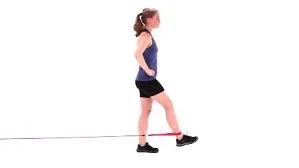
- Start with the feet hip-width apart.
- Shift the weight to your left foot.
- You can also use a theraband.
- Flex the right foot and keep up the right leg straight as you lift it to the side, no more than 7 inches off the ground.
- Lower the right leg.
- Repeat the leg lift 10 to twelve times.
- Return to the starting position and perform another set using the left leg.
Squats
Squats may strengthen the front of the legs as well as the buttocks. The person does not have to squat deeply for this exercise to be effective.
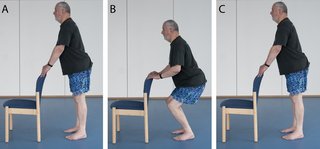
- Start with the feet hip-width apart.
- Rest the hands lightly on a sturdy piece of furniture or counter for balance.
- Bend at the knees to slowly squat down.
- Keep the back straight and lean slightly forward, feeling the legs working.
- Do the squat only until the thighs are parallel to the ground.
- Tighten the buttocks to return to a standing position.
- Perform it 10 to 12 times.
Ball sit
This exercise may give balance and strengthen the abdominal muscles. It should be done using a large exercise ball. The person should also have someone by their side to act as a “spotter” to help them maintain the balance.
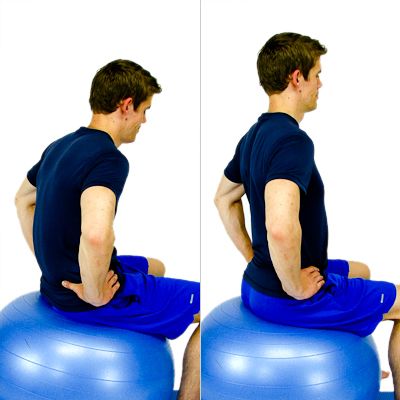
- Sit on the exercise ball with your feet flat on the floor.
- Keep up the back as straight as possible while you maintain the balance.
- If you are able, hold the arms out at the sides, palms facing forward.
- Maintain the position for as long as one minute, if possible.
- Stand and rest.
- Repeat the exercise up to 2-3 more times.
Standing on one leg
This exercise gives greater balance.
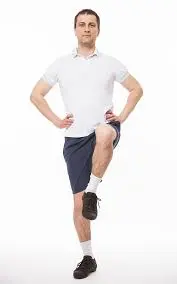
- With a strong piece of furniture nearby if you need to grasp onto something, stand on one foot for one minute, if possible.
- Repeat the balancing exercise on the other leg.
Balance exercise
What are the benefits of Balance Exercises? If the turner syndrome patient has a balance problem a physiotherapy assessment and balance exercises program will be of benefit to them. There are soo many benefits of balance exercises which are:
- Improved static balance
- Improved dynamic balance
- Improved joint proprioception
- Improved muscle reaction time – Improving the body’s ability to react to balance challenging situations
- Reduced risk of falls
- Improved function – tasks may be done outside of the base of support without risk
- Reduced muscle compensation – muscles may become overactive to compensate for poor balance
- Improved mobility – improved balance will enhance mobility and improve energy efficiency.
Standing March

- Standing near a sturdy support, start marching in place slowly for 10-20 seconds.
- As this becomes easier, the physical therapist can challenge the balance and change up the pace and surface you are marching on: from hardwood to carpet, foam pad, grass, etc.
Standing 3-Way Kicks
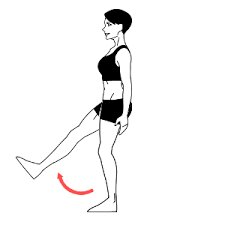
- Standing on 1 leg (with a soft, unlocked knee), gently raise the other leg out in front of you.
- Keep up the extended leg as straight as possible and return it to the center.
- Then slowly lift the same leg out to the side and back down, and then extend the leg behind the body and back down.
- Do as many as you can each way.
- The physical therapist can increase the difficulty of this exercise by removing the supporting surface.
Sidestepping
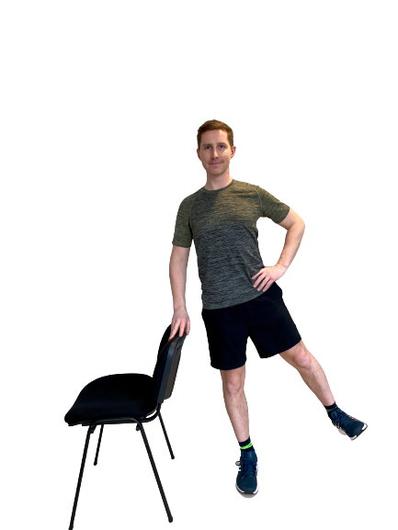
- Facing a countertop or wall (with the hands on the counter or wall for support as needed), step sideways in one direction with the toes pointed straight ahead until a person reaches the end of the wall or counter.
- Then, return in the other direction.
- As this becomes easier, a physical therapist can add in the use of a resistance band at the knees or just above the ankles.
One-Leg Stand
- Stand on one leg as long as a person is able, up to 30 seconds.
- Remember to remain around a strong support surface that you can grasp if needed.
- Alternate legs and try to do this 5-10 times on both legs.
- As this becomes easier, challenge yourself by doing other tasks while standing on 1 leg, like brushing your teeth, talking on the phone, or doing the dishes.
- Balance exercises may easily be integrated into the daily routine this way.
Sit to Stand

- Rise out of a chair without using the arms to push up.
- If this is difficult in the beginning, put a firm pad underneath you on the chair seat to raise you.
- As you return to a seated position, gently lower yourself all the way back down and ease into the seat (rather than dropping into the chair). Perform as many times as a person is able to do.
- This may easily be done while watching TV.
Heel-to-Toe Standing or Walking
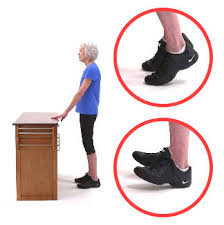
- Put one foot directly in front of the other, so the heel of the front foot touches the toe of the back foot.
- Hold this position for as long as you are able, or up to 10 seconds.
- As this becomes easier, try taking a few steps in this heel-to-toe position, as if you are walking on a strong rope.
- Remember to use something to grasp onto for safety.
Soo many factors may contribute to a lack of balance and falling. Specifically, those who have felt dizziness, stumbling, or falls, should acquire comprehensive treatment from a PT or another qualified health professional. Some physiotherapists specialize in balance and fall management.
Tightrope walk
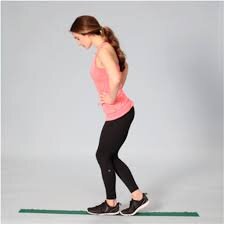
- Tie a piece of string to two poles.
- Hold the arms out wide to the sides.
- Try to walk on the string without stepping off to the side.
- Walk at least 20 steps.
Rock the boat
- Stand with the feet hip-width apart.
- Press the weight into both feet firmly and evenly.
- Tie up the weight onto the left foot and lift the right foot.
- Hold for up to 20 seconds.
- Gently lower your left foot to the floor and repeat on the other side.
- Perform each side five to 10 times.
Flamingo stand
- Stand on the left leg with the right leg lifted.
- Use a chair or wall for support as you stretch the right leg forward.
- Maintain good posture by keeping the spine, neck, and head in one line.
- To improve the difficulty, extend the hand to reach for the right foot.
- Hold for up to 15- 20 seconds.
- Then do the other side.
Heel-toe walking

- Bring the arms to the side so they are parallel to the floor.
- Use chalk or a string to draw a line to follow.
- Walk in a straight line, placing the back of the heel against the toes of the opposite foot.
- Move gently and with control.
- Continue for 10 to 20 steps.
Balance exercises with a ball
Plank with elbows on a stability ball
To add variety to this exercise, a person may use the elbows to make small circles with the ball in both directions.
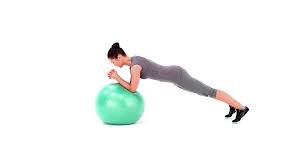
- Come into plank position with the elbows and forearms on a stability ball.
- Engage the core, glutes, and quadriceps to maintain proper alignment.
- Align the shoulders and hips so they are square to the floor.
- Maintain this position for up to 3 seconds.
Beach ball balance (with a partner)
- Grasp a medicine ball while standing on one or both legs on the platform.
- Have the partner throw a stability ball toward you.
- Use the medicine ball to knock the stability ball back to the partner.
- Do 15 to 20 repetitions.
FAQ
Symptoms can differ from one person to another but may involve fatigue, sluggishness, muscle aches, constipation, a hoarse voice, and pale, dry skin. Some people with Turner syndrome may have too many tiny colored spots (pigmented nevi) on the skin.
Girls with Turner syndrome generally have normal intelligence, but some can have learning problems, particularly in mathematics. Many also struggle with tasks requiring spatial skills, like map reading or visual organization. Hearing problems are more usual in girls with TS.
The burning up of calories is decreased in anyone of short stature and women with Turner’s syndrome are, therefore, often overweight. Body weight requires careful monitoring to prevent obesity. Mindful attention to diet and exercise are necessary to bring about weight loss.
A person with Turner syndrome has an abnormally short stature—the average height of an individual with TS is 4 ft 8 in. Other distinctive physical features of turner syndrome include low-set ears, webbed neck (excess skin on the neck), scoliosis, and fingernails and toenails that turn upward.
Turner syndrome may cause a wide range of symptoms that affect a range of organs, incorporating the heart, eyes, ears, bones, and kidneys. Most girls with Turner syndrome are born with poorly formed or missing ovaries, which may result in a failure to reach puberty and infertility. Soo many people are also short in stature.

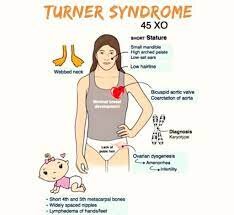
![Test for tight retinacular [ collateral ] ligaments](https://samarpanphysioclinic.com/wp-content/uploads/2023/06/Test-for-tight-retinacular-_-collateral-_-ligaments.webp)
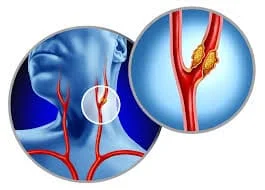
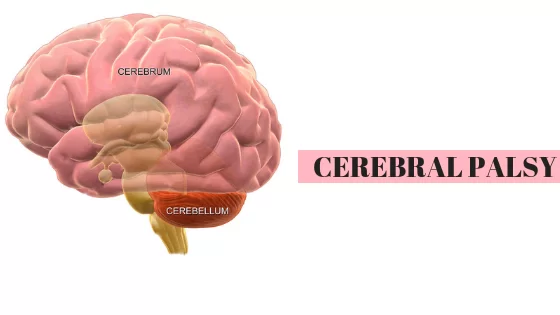

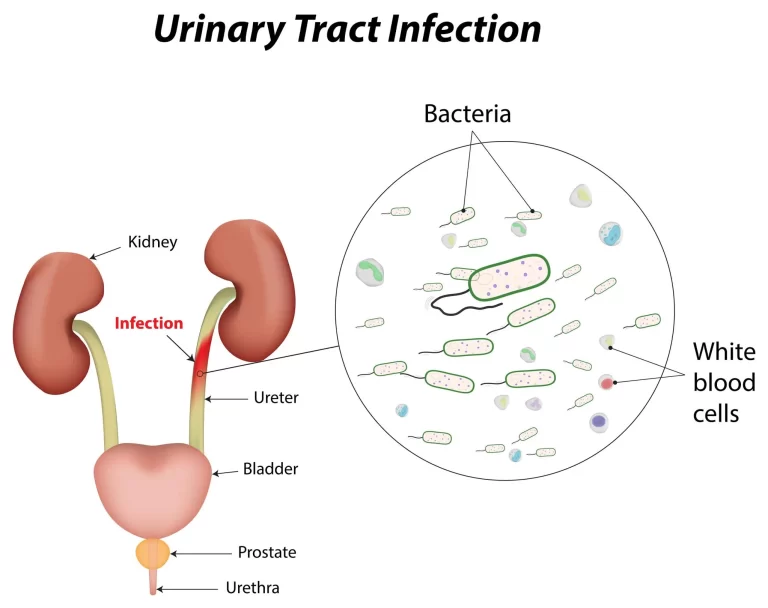
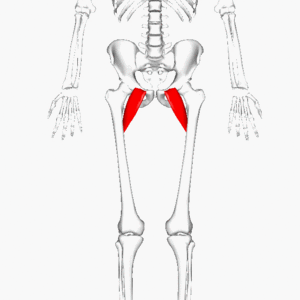
One Comment